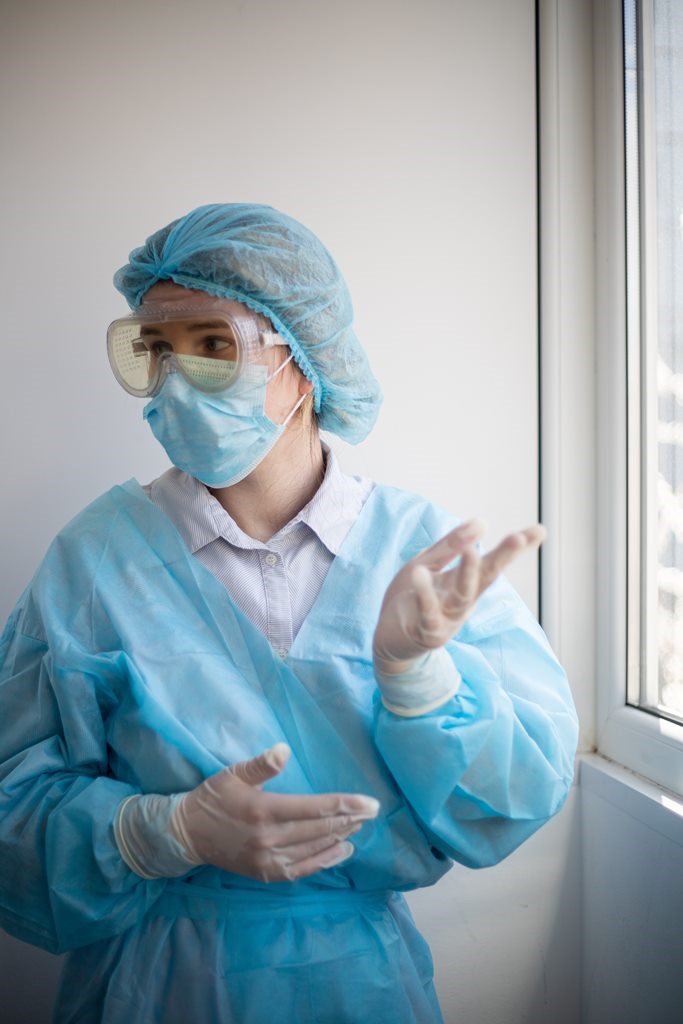Resident Perspectives: Working in the trenches of COVID-19

Arya Akhavan, MD
University of North Carolina
Our institution cancelled all elective and non-urgent cases at the beginning of March, then instituted a moratorium on non-urgent cases until the end of May and put elective cases on indefinite hold. Naturally, our case volumes have dropped drastically. The administrative chiefs are trying to redistribute our remaining cases equitably across all residents, including those off-service, which helps to maintain some semblance of normalcy. For inpatient services, only a single resident rounds per day – and to limit potential exposure to COVID, E.D. consults and rounding on patients is being triaged to only the patients who truly need a physical exam.
Residents on their aesthetic rotations are using this time as dedicated research time and have strong faculty support. The faculty have weekly meetings and resident check-ins, both from an academic and a mental health/well-being perspective; didactics, M&M and Grand Rounds are held over Zoom. Residents are also now required to attend at least three webinars per week from the Resident Council calendar.
Benjamin Schultz, MD
Hofstra-Northwell
As a PGY5 in the Northwell Health System, the largest in New York state, my colleagues and I were quickly redeployed to frontlines either in the E.R.s or ICUs as early as mid-March. Our three main hospitals have taken care of more than 6,000 patients with COVID19; personally, I've cared for dozens in the ICU.
The impact has been severe for us. Since our redeployment, plastic surgery training has been reduced to daily virtual conferences. All of my co-residents have served in COVID ICUs, and they've done so with great decorum and care. Personally, I have been separated from my wife and 5-week-old son since the end of March to ensure their safety.
As a PlastyPAC Resident Ambassador, I've had the opportunity to have Zoom conferences with several congressmen and congresswomen in the past few weeks. I made it a point to discuss the importance of improved access to PPE, hazard pay and student loan forgiveness for all residents even if only minimally impacted by the pandemic, and I'll continue these efforts as long as I'm able.
Johnathan Shih, MD
University of Washington
As a PGY2 resident at the University of Washington, I served as the "trauma doc" of the E.D. at Harborview Medical Center, Seattle, during the height of our COVID-19 crisis. A role unique to our program, the trauma doc is typically a PGY2 Surgery or EM resident who functions as team leader during the resuscitation of all trauma patients that come through the E.D. As the only Level I trauma center across five states, our patient volume is often near capacity at baseline. With the advent of COVID-19 in the United States – and Seattle becoming the initial national epicenter of the disease – the University of Washington was tasked with pioneering strategies to expeditiously triage at-risk patients while also protecting its healthcare workers.
As part of this response, and in an effort to keep pace with the rapid evolution of COVID-19 and the unprecedented disruption of global supply chains, new clinical protocols were being piloted in the E.D. on a weekly basis. Some initiatives, such as the setup of a medical tent outside the E.D. as a pre-triage area for all patients presenting with fever or respiratory symptoms, immediately helped to alleviate patient burden and made it possible to comply with social-distancing guidelines when rooming patients.
Other protocols, particularly those related to trauma resuscitation, created logistical and communicative challenges that were often difficult to navigate. As an example, all trauma patients who presented to us intubated from the field were presumed to be COVID-positive and treated in an isolated trauma bay under full airborne precautions until a tracheal-aspirate sample could be confirmed negative or positive.
To conserve limited PPE, only four providers (trauma doc, trauma surgery resident, RT and RN) would typically be allowed at bedside in the trauma bay for any resuscitation. These personnel restrictions, in conjunction with the challenges of closed-loop communication while wearing an N-95 or PAPR hood, presented obstacles that would have been insurmountable without well-organized pre-arrival team debriefings and role delegation.